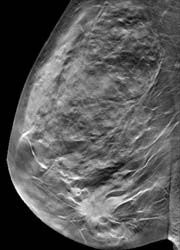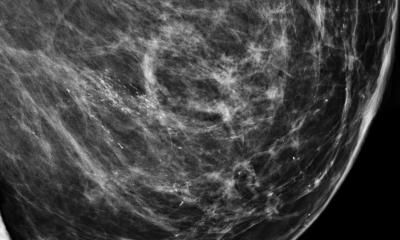BREAST THERAPIES
Ballon Brachytherapy and effective drug combination.

Balloon Brachytherapy
Balloon brachytherapy is an acceptable alternative to external beam radiation for selected operable breast cancers, and this one-week treatment time allows working women and those living some distance from radiation centres to choose breast conservation rather than mastectomy, according to a paper published in Arch Surgery in June*.
‘Partial-breast irradiation for carcinoma by a single source of radiation placed in the centre of a balloon inserted in the lumpectomy cavity is an effective method of treating breast cancer. Previous interstitial radiation therapy using iridium seeds placed within multiple catheters has been shown to be effective but impractical and cosmetically unacceptable to women,’ said the research team, who work at the Departments of General Surgery and Radiation Oncology, Rush University Medical Centre, Chicago; the Alabama Breast Centre and Department of Radiation Oncology, Montgomery Cancer Centre, Alabama, and the Lanshe Breast Centre and Centre for Cancer Care, Sacred Heart Hospital, Allentown, PA.
Women aged 40 years plus, who had been diagnosed with in situ and invasive T1 through T2 and N0 or N1 breast cancer and treated with lumpectomy and axillary node sampling, took part in the study to evaluate immediate and short-term complications, their acceptance of the treatment, and cosmetic outcome.
‘Of the 129 patients taking part, 112 completed the treatment. 28 experienced transient skin erythema; three had localized oedema and nine showed skin blisters adjacent to the balloon. Seven developed infection, which needed drainage and antibiotic treatment. In ten, ultrasound indicated seromas had developed after removal of the device, which were aspirated percutaneously. In four patients, punctured or ruptured balloons had to be replaced before treatment could be completed. The team reported that patients quickly adjusted to breast distension caused by the balloon, and their acceptance of the procedure was good. The cosmetic outcome was rated high. There were no recurrences during this very short follow-up.’
* Arch Surgery Vol. 139, June 2004. 603-608. Authors: Kambiz Dowlatshahi MD; Howard C Snider MD; Mark A Gittleman MD; Cam Nguyen MD; Phillip M Vigneri DO; Robert Lee Franklin MD.
Effective drug combination
Combining the molecularly targeted therapy Herceptin with a specific chemotherapy combination has resulted in significant tumour response rates and longer relapse-free periods in women suffering an aggressive form of advanced breast cancer, according to two studies carried out at the Jonsson Cancer Centre, University of California Los Angeles, which were published recently in the Journal of the National Cancer Institute. The first study was carried out on cell lines in the laboratory and the second focused on over 120 patients in two Phase II clinical trials.
01.07.2004










